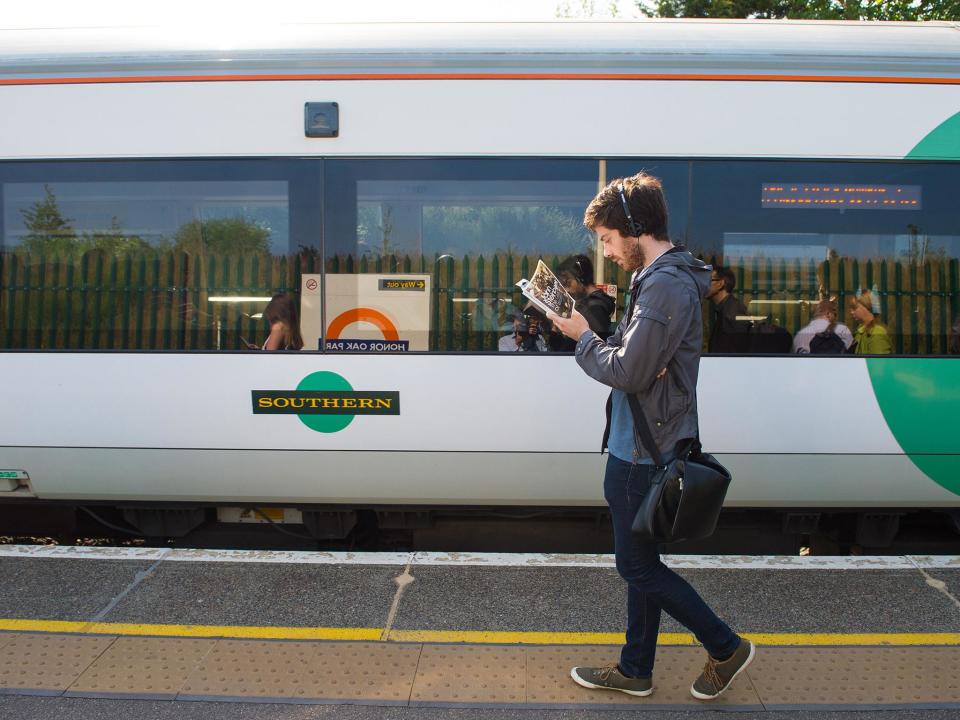Southern Rail commuters promised better train service from 20 May as entire timetable set to change
“The train you travel on today will not exist from 20 May,” says Charles Horton, chief executive of GTR. “That’s the simple truth.”
But the man who runs almost one in four of UK rail services, including the troubled Southern operation, is telling commuters that things can only get better. He ordered his staff to tear up the timetable and start again, to produce: “A timetable which is far more operationally robust than the timetable it replaces.”
From 2am on Sunday 20 May 2018, schedules with origins stretching almost a century will be torn up.
The new timetable promises dramatic improvements for commuters from Brighton to London Victoria, the core of the Southern operation.
In the hour from the first post-6am service, at 6.14am at present, there are five trains taking an average of one hour, 15 minutes. Starting on the first working day, 21 May, the same number of trains will run, but because stops have been cut the typical journey time is just 59 minutes.
Two minutes is sliced off the average journey time of the Gatwick Express from Victoria to the Sussex airport, which is also part of the GTR franchise. And the dismally slow Thameslink journey connecting Gatwick with London Blackfriars in central London finally accelerates to 35 minutes, saving a quarter-hour on the current crawl through the south London suburbs.
The firm has spent years examining why so many things go wrong with the current schedules. In many cases trains are delayed because of wholly unrealistic “dwell times” at stations: with the number of passengers on Southern trains doubling in the past 12 years, assuming that trains at East Croydon — one of the busiest stations on the network — would pause only momentarily was clearly ludicrous. Trains are now scheduled to allow one minute for passengers to leave or board the service.
For many travellers, though, the main benefit of the transformation will be the introduction of far more north-south trains through the central Thameslink spine between Blackfriars and the Eurostar hub at St Pancras International.
Implausible services will start from quiet Sussex towns such as Littlehampton and East Grinstead and run through to St Albans, Luton and Bedford.
Horsham and Crawley get frequent services that join the East Coast Main Line and run as far north as Peterborough. And Cambridge will be connected with Brighton every hour, with trains taking 2 hours 32 minutes.
The direct trains will take some of the strain from the Tube, and provide easier links to both Gatwick and Luton airports for many travellers.
Phil Hutchinson, head of strategic planning for GTR, has been guiding the timetable restructuring. He says: “People will be able to travel more comfortably on new routes through London, making seamless journeys to the airport.”
The switch is far from problem-free. Initially some of the planned trains will be cancelled before they even start, due to a breaking-in period lasting several weeks.
The full service of 24 trains per hour through the central London spine will not happen until December 2019, a year later than planned.
And the Thameslink changes have had a serious knock-on effect for travellers on the East Midlands line north of Bedford, with services to Wellingborough and Kettering significantly reduced for commuters.
Travellers everywhere on the network are being warned that “Year Zero” will affect their usual plans.
“If anyone can find a train which still exists after 20 May, there will be a prize,” promises Mr Horton.



